The secret to picture perfect pillows lies within… pillow inserts! Pretty pillow covers can fall flat without the right insert. Elevate your space with designer tips for size, fill, fabric, styling and recommendations that stack up better than the rest!
Pillows add comfort, a pop of color or texture, and function to living rooms, bedrooms, outdoor spaces and more. They can elevate a tired sofa or basic bedding to new heights.
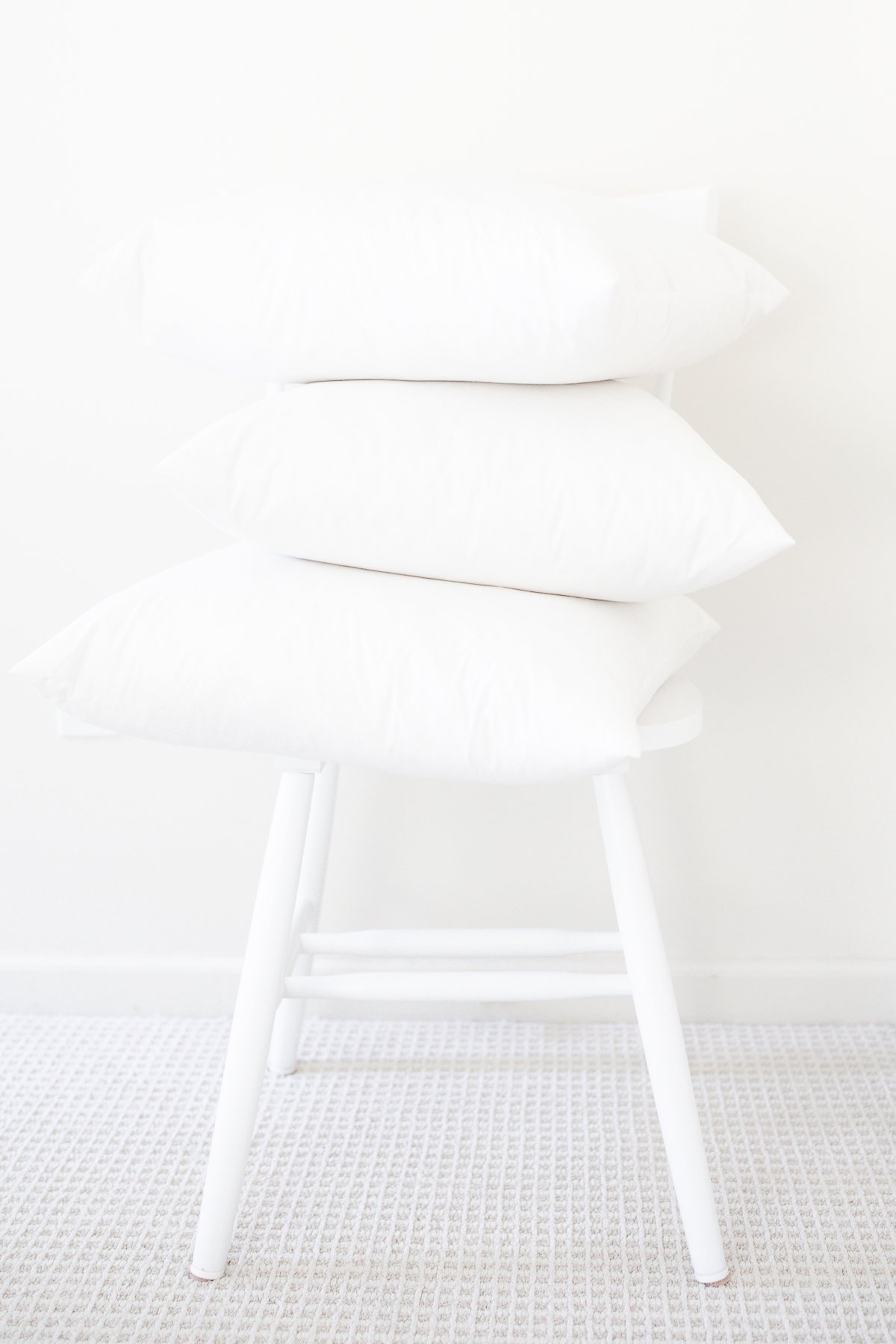
Throw Pillow Inserts
I receive emails from readers seeking design help with a common theme – asking why a room in their home feels “off”. With just one pic, I quickly pinpoint common culprits – rug size, curtains hung too low, scale of furniture and frumpy pillows.
Inserts can make or break the look and feel of a room. They can take both pricey and inexpensive pillow covers to the next level! I’m sharing secrets all the pros know!
What to Consider When Purchasing Pillow Inserts
- Size
- Fill and Fabric
- Allergens
- Use
- Style Preference
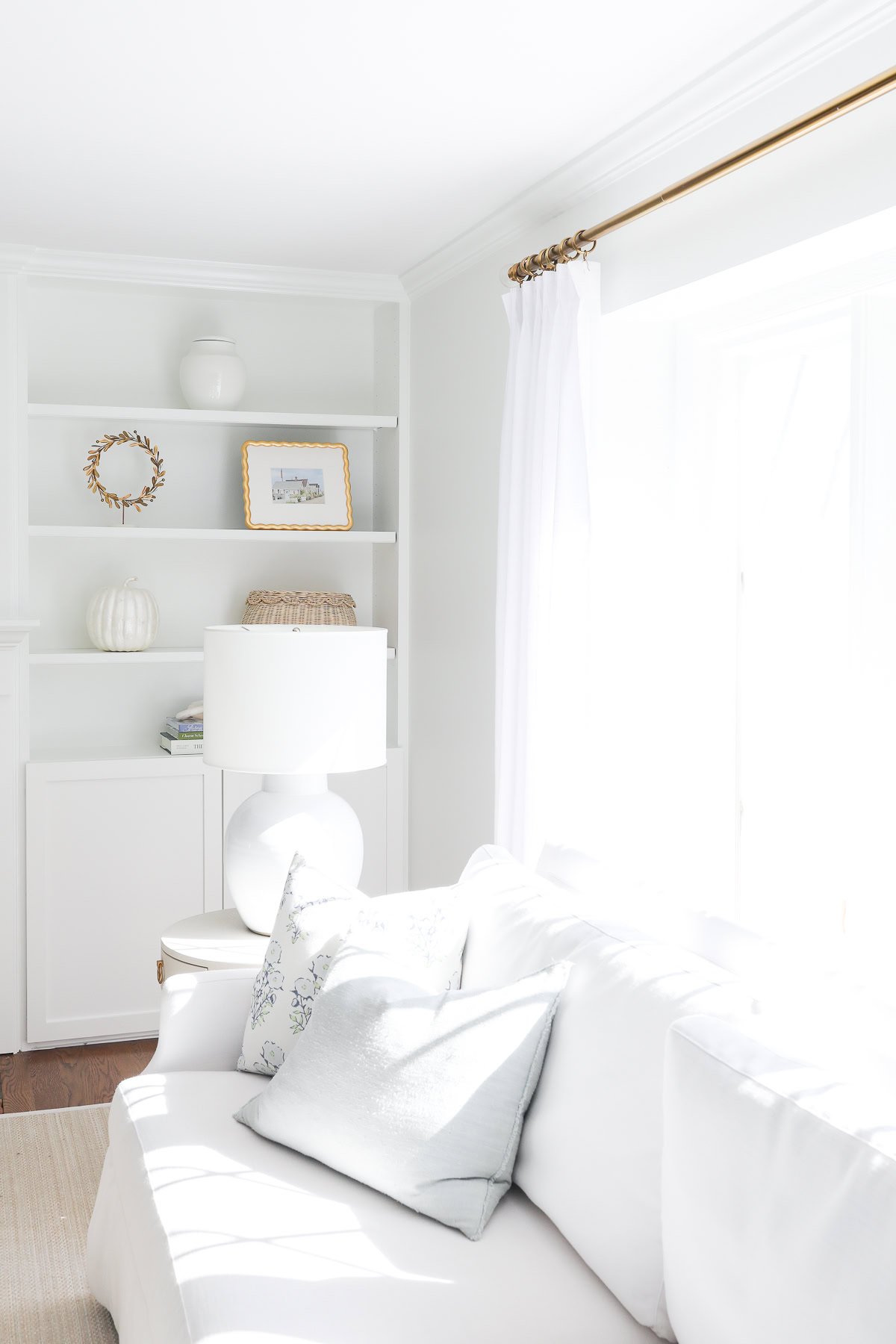
Pillow Insert Sizes and Tips
Size matters. Pillow Inserts come in a variety of sizes. Some of the most popular are:
- 16×16 Pillow Inserts
- 18×18 Pillow Inserts
- 20×20 Pillow Inserts
- 22×22 Pillow Inserts
- 24×24 Pillow Inserts also known as Euro pillow inserts
- 26×26 Pillow Inserts
Lumbar Pillows:
- 12×20
- 14×20
- 16×24
I tend to shy away from small pillows, unless they are used as an accent in front of larger pillows. For square pillows, the smallest I typically use is a 20×20 pillow and for lumbar pillows, 14×20. You can learn how to mix and match pillows and sizes here.

Pillow Insert Sizing Tip
Choose an insert that is 2-4″ larger than your pillow cover. This makes pillows look picture perfect, while remaining soft and plush!
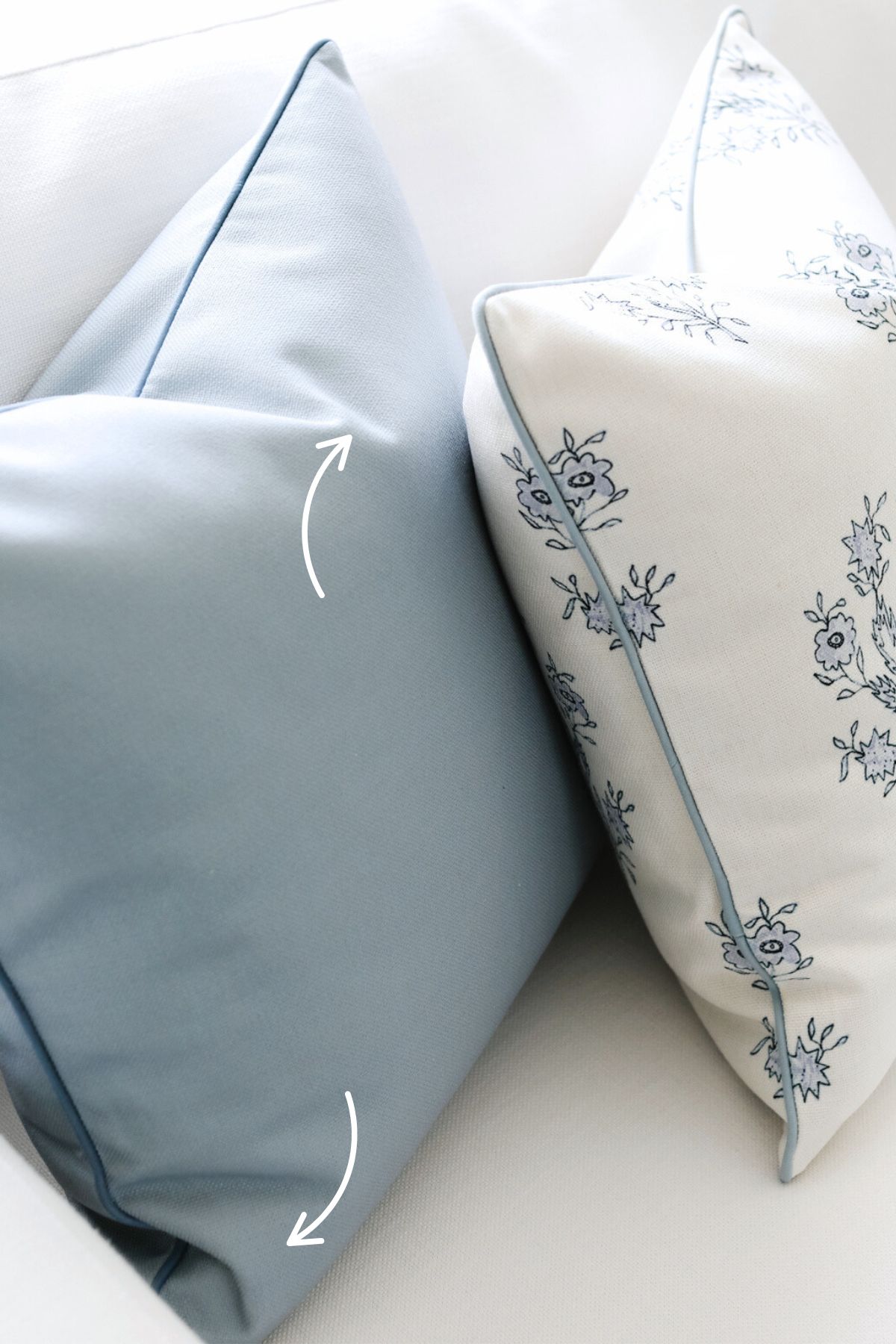
When selecting an insert, choose 1 size larger than your pillow cover for a luxuriously full, plush pillow! Stylists, designers, and magazines use this little-known tip in every shoot! Add 2-4″ to fill out the pillow and corners.
This “rule” doesn’t apply to smaller pillow covers. For 18×18 or 20×20 pillow covers, I recommend using inserts that are 2″ larger. An use a 20″ pillow insert for an 18″ cover and a 22″ insert for a 20″ cover for best results.
The larger your cover, the larger the insert needs to be to fill the pillow. For a 22″ inch pillow, use a 24″ Euro pillow insert or a 26″ insert and for larger 22″ or 26″ pillows, add 4″ to the insert size.
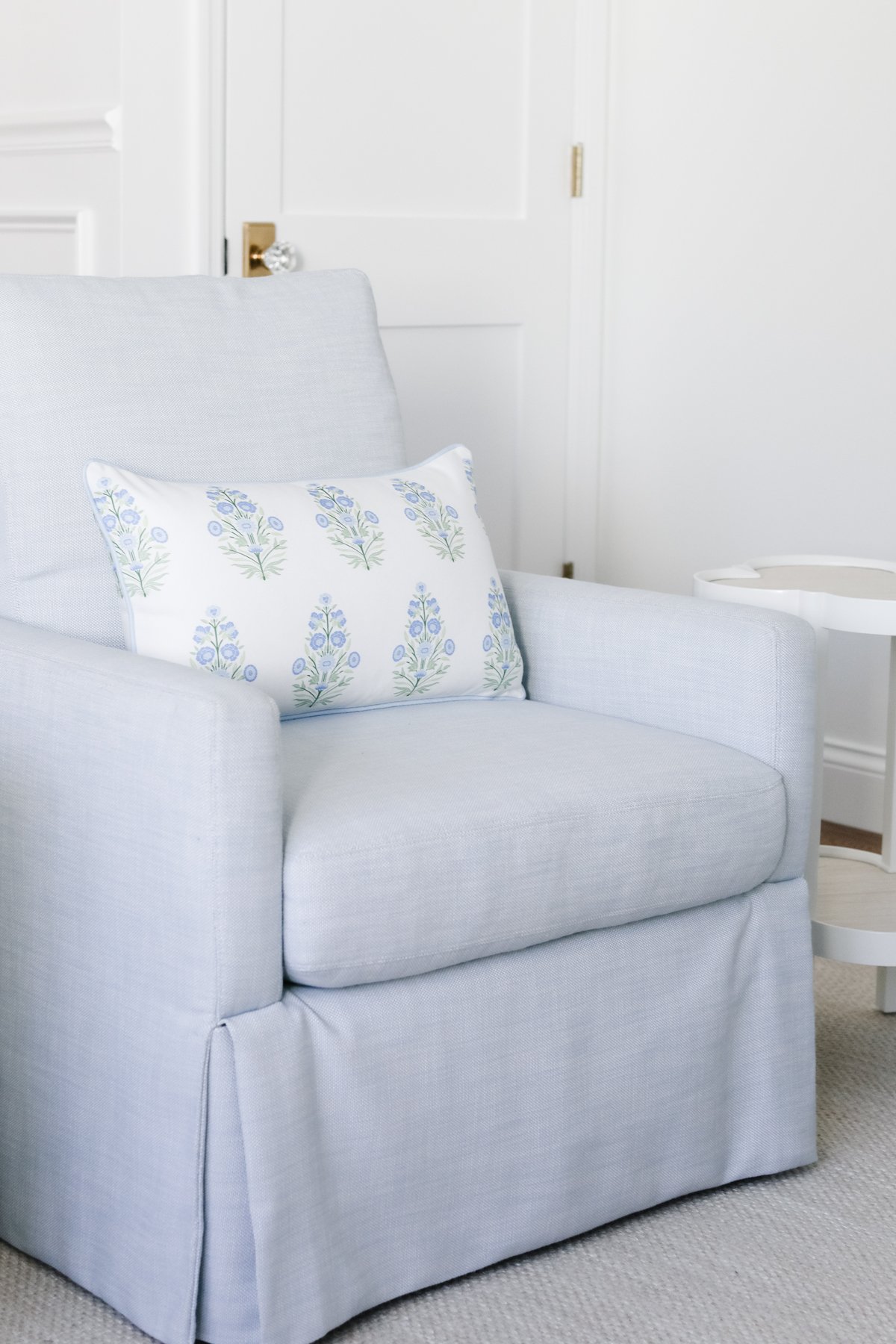

Tip
Sizes may be indicated on the removable tag. Use a permanent marker to write the pillow size on the permanent tag for easy reference.
Fill Material
What is the best fill for your pillows – feather, down, down alternative, cotton or synthetic?
To find the fill that is right for you, it is important to consider allergies, use and your styling preference.
Down
Down is my favorite fill because it is luxuriously soft, light, supportive and long-lasting. Clusters cover the soft quill in the center, so you never feel them. Goose down comes from the soft, fine undercoating of the bird.
They maintain their shape, effortlessly fluff and give you a picture perfect pillow or “karate” chop, which is why they are most often used in photo shoots.
Down pillow inserts are more expensive than other fills, but they are often the most comfortable and elevate the overall appearance. They tend to look formal and elegant in any space.
Down Insert
A tightly woven cotton cover keeps down feathers from flying around your home while maintaining great shape and optimum comfort.
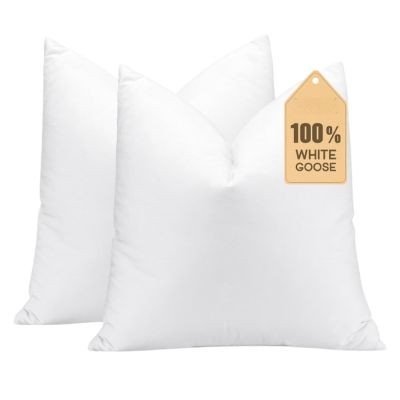
Down Insert
This down and feather blend has been one of my go to’s for years. They’re plush and lose very few feathers over time.
Feather
Feather pillows offer the same appearance as down, at a fraction of the cost. Feathers give pillows a fluffy appearance, but are not as durable or soft as down. They flatten, lose their shape and don’t rebound as well. Feathers can have thick and pointy quills.
Feather pillow filling generally the back or wing feathers of geese, and they are flatter and heavier, making them more likely to break through a cover.
I recommend quality inserts with double layer fabric to protect fill from “leaking”. Feather fill works well in thick or tightly woven pillow covers for an added layer of protection and frequently fluffing for the best appearance.
Feather Insert
I use these inserts for some of our less frequently used spaces and for decoration (rather than comfort), they the are still comfortable. They retain their feathers better than most.
Down & Feather Blend
A down and feather blend pillow insert are the best of both worlds. They look and feel elegant on sofas, chairs and beds, fluff beautifully, are comfortable and affordably priced.
Down and feather inserts are not as stiff as most 100% down or down alternative pillows. They lend well to a more casual, comfortable, cozy style. Down and feather blend pillows require occasional fluffing for best results.
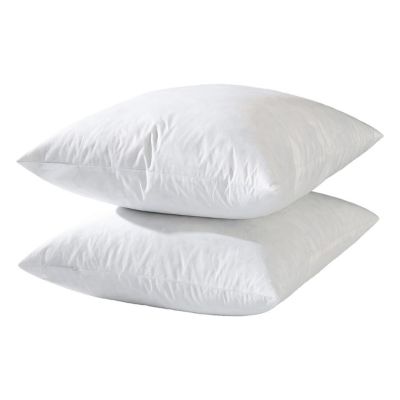
Down & Feather Insert
Cut the cost without compromising comfort! A downproof stitch cover keeps feathers and down inside for a foolproof fluff.
How to Wash Feather and Down Pillow Inserts
These guidelines apply to both bed pillows and throw pillows. However, it’s important to clean your pillows meant for sleeping more frequently, as they are more likely to absorb sweat and bacteria.
First, ensure that your pillows are labeled machine washable.
- Remove Covers – Before washing your down pillow inserts, remove any cases or covers and wash separately.
- Inspect – Any obvious rips or tears at the seams? Make any necessary repairs to avoid a feather mess in your machine.
- Balance – When washing any pillows, you’ll want to wash two at once to help the washer stay balanced with weight. Front loaders are best for ease of use, but pillows can be washed in any type of machine.
- Gentle Detergent – To avoid feathers clumping, use a gentle, low suds detergent meant specifically for down feathers if possible. Use your lowest delicate cycle, too.
- Hot Water – Hot water kills dust mites and any bacteria.
- Rinse – Rinse a second time to eliminate any soap residue that may remain from a slow, gentle wash with low suds soap.
- Tumble Dry – It is important to completely dry pillows on delicate setting with low heat. Break any clumps apart and repeat until completely dry. They will not only be clean, but help enhance their fluffiness!
Cotton
Cotton inserts are also often referred to as “down alternative”. They’re typically the most affordable and allergy friendly. Cotton fill is soft to the touch and tends to bounce back. The natural fibers of cotton are known for it’s breathability, so they do not absorb body heat.
Cotton conveys a casual style. It provides very minimal flexibility in shape and styling. What you see, is what you get. Cotton fill loses its shape and becomes lumpy over time through use.
Cotton inserts are best in spaces with minimal or decorative use, for allergens and price point.

Tip
Allergies? Select a premium hypoallergenic pillow insert with 100% cotton fill and exterior fabric.
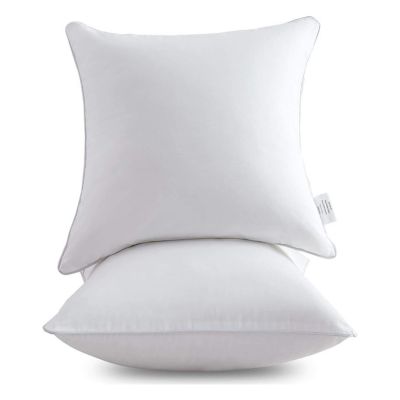
Cotton Insert
With over 6,500 5 star reviews, it’s clear, everyone loves these and they’re incredibly plump!
Polyester
Polyester is a synthetic fill. Polyester inserts are cost-effective and hypo-allergenic, but come at a cost. They are less fluffy, breathable and comfortable than other filling.
Polyester pillow inserts flatten, clump and shift over time, resulting in a short lifespan. It is difficult to achieve a smooth, full, to-the-corner appearance. They lack overall comfort and support and quickly look and feel lumpy.
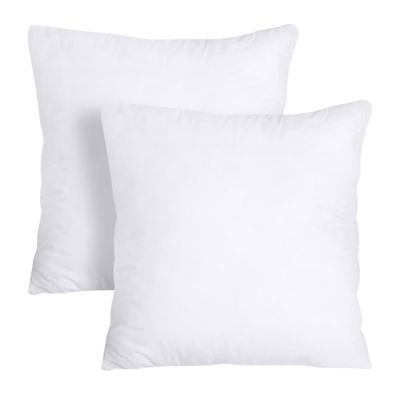
Polyester Insert
These polyester pillows are tried and true. They are cost effective, softer, and more durable than most. They are a reader favorite, too…my best seller!
Outdoor Pillow Inserts
I design outdoor spaces with all the amenities of an indoor room, including plump pillows for added comfort. Quality outdoor pillow inserts provide convenience, value and a billowy look and feel. They are made with polyester fill that can withstand weather, and are moisture, mold, and mildew resistant. They are typically ultra soft, with a high fluff factor and less prone to clumping. Outdoor pillow inserts are machine washable , adding to their appeal.
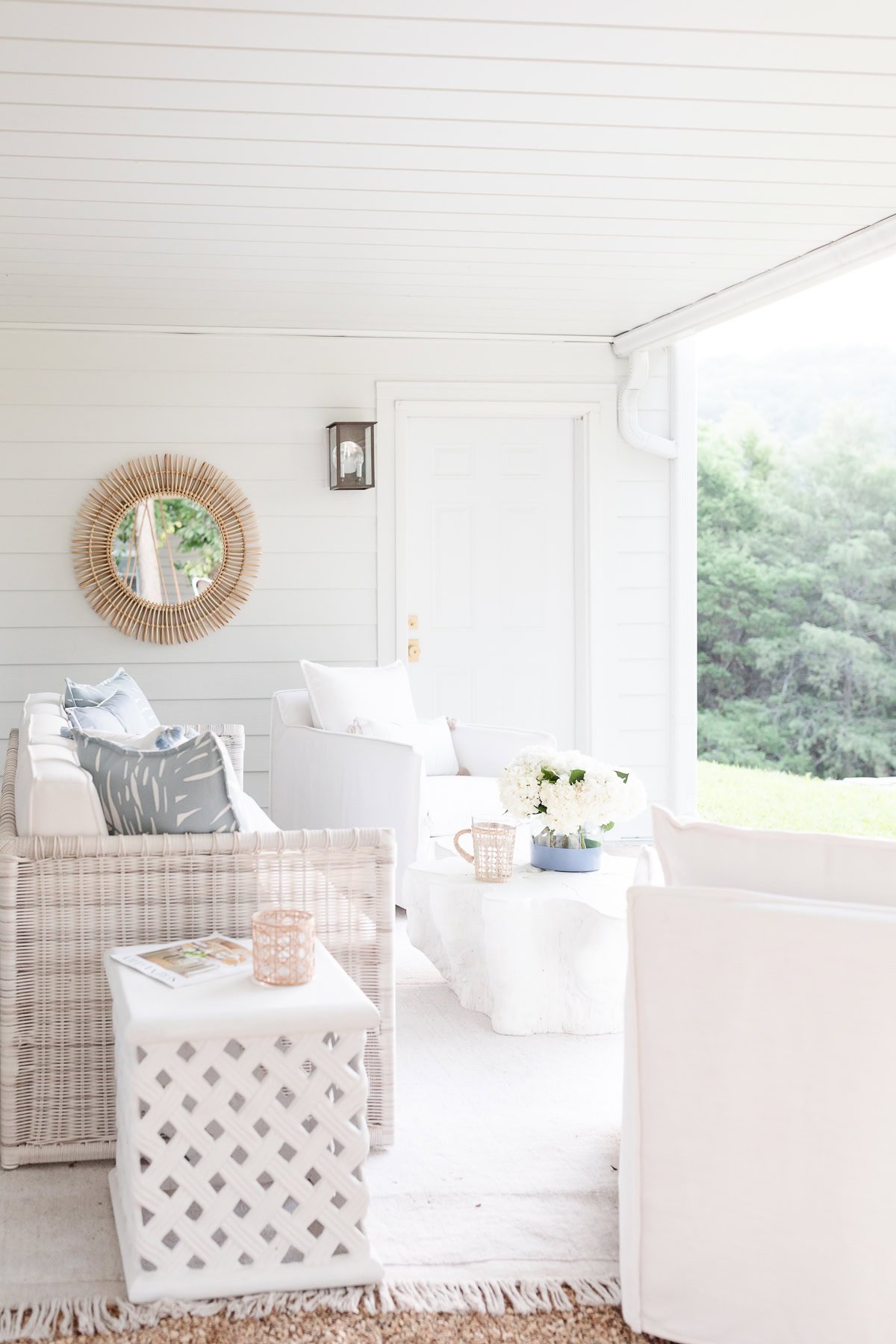
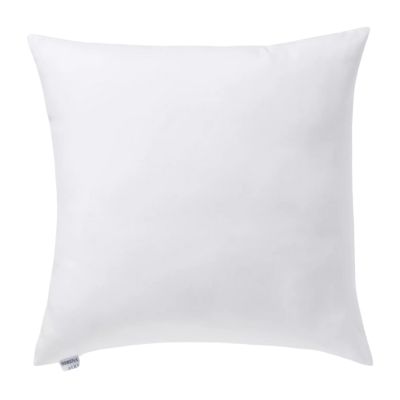
Outdoor Pillow Inserts
Use these polyester pillows indoors and outdoors for comfort, convenience and modest cost. These are my go to outdoor pillows. I know you’ll love them, too!
Originally published August 8, 2021.

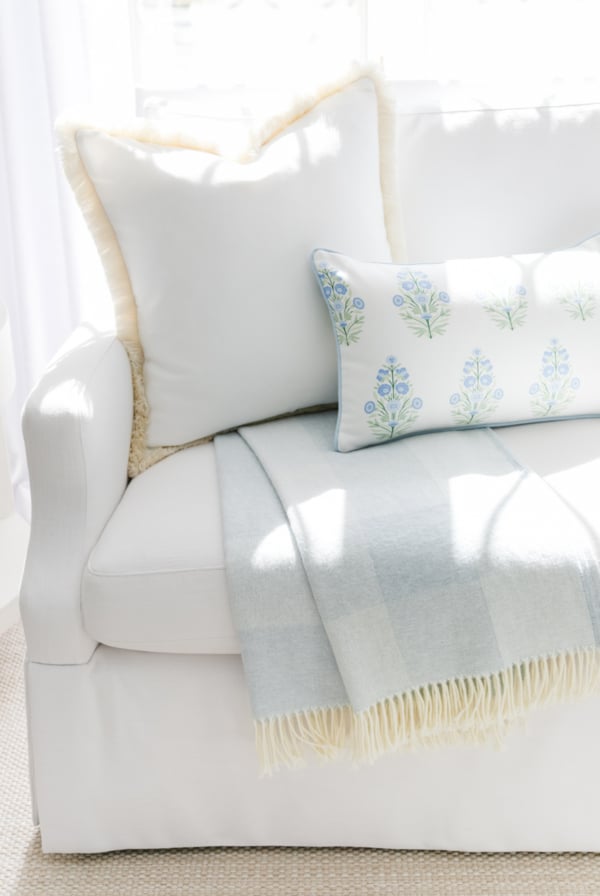
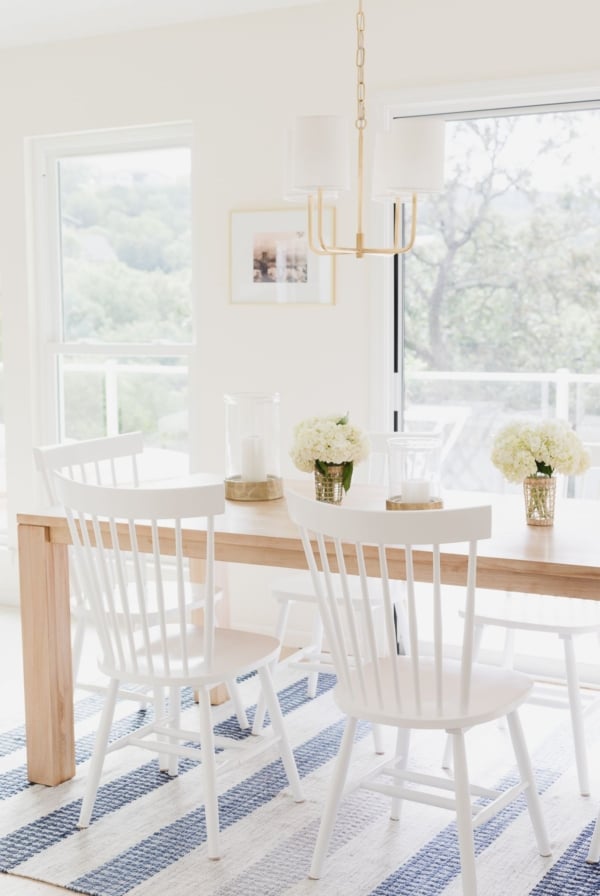
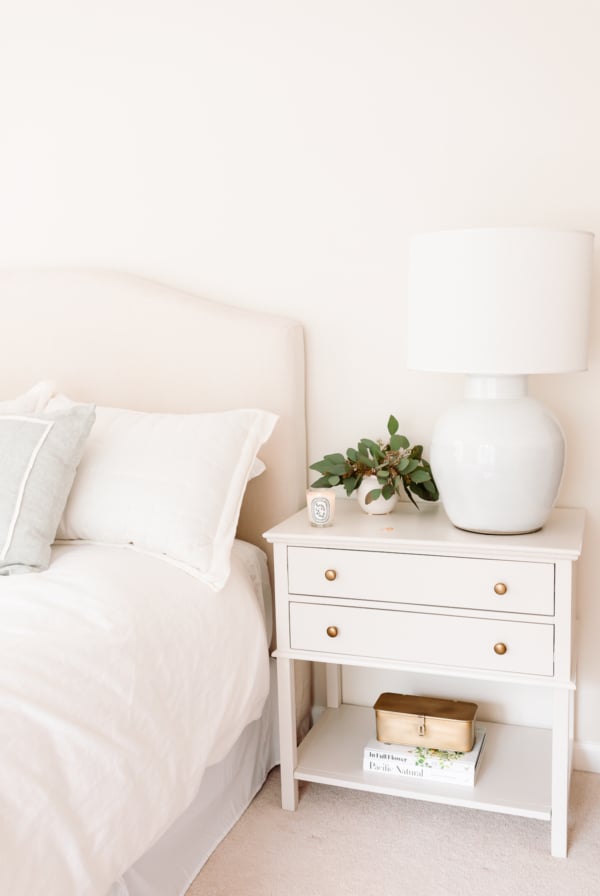
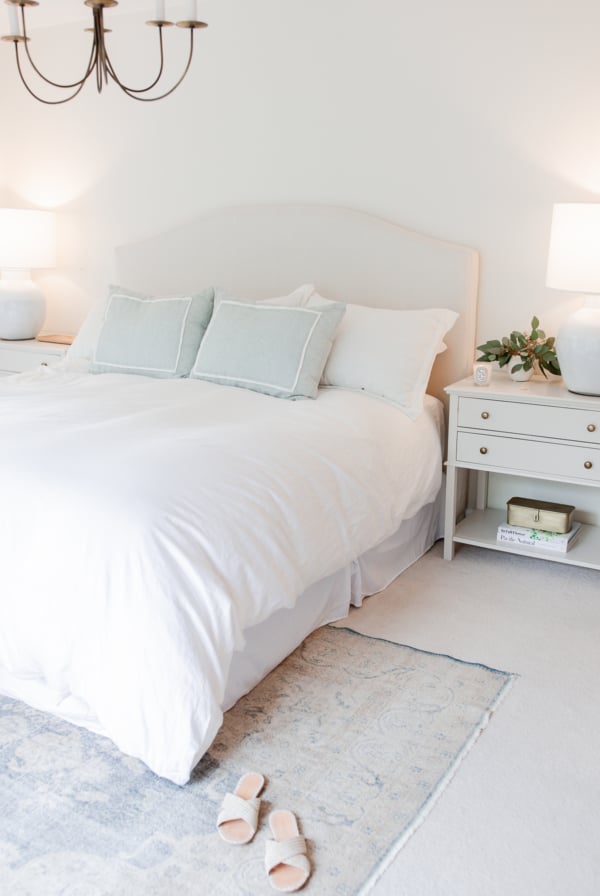
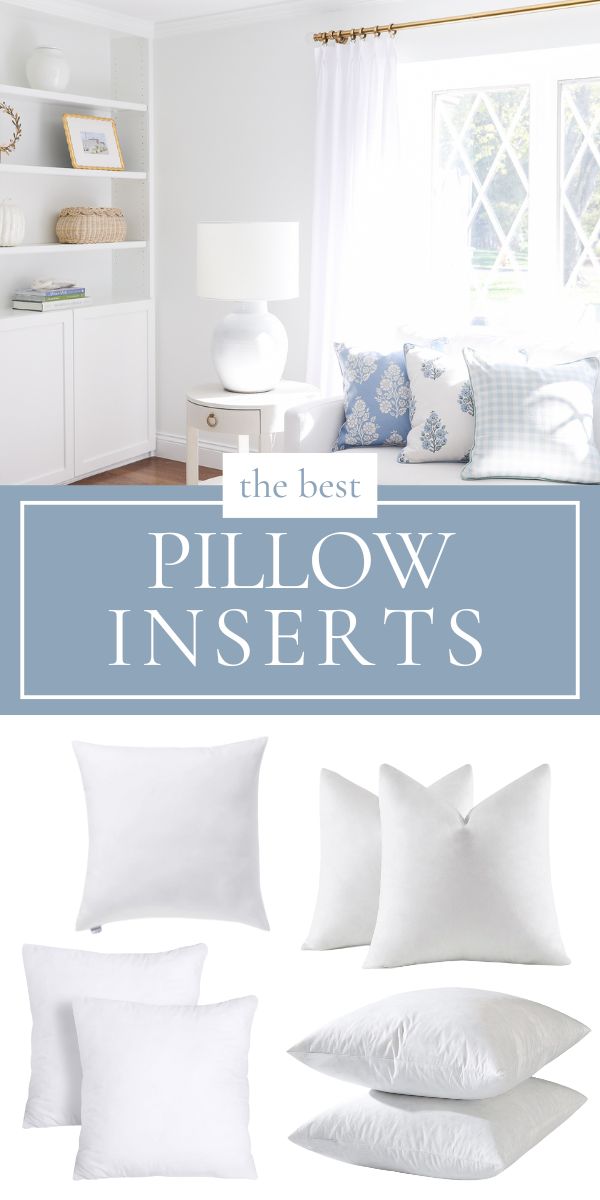
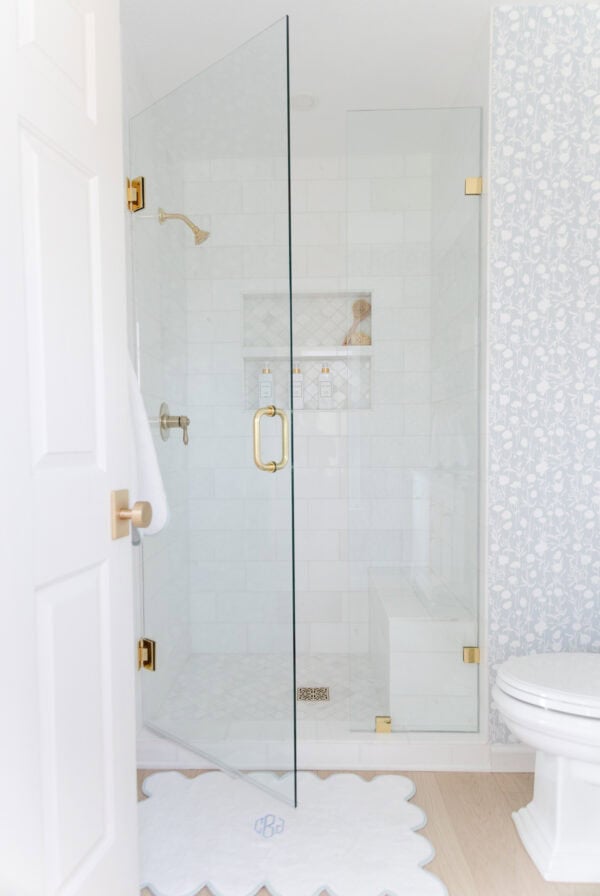
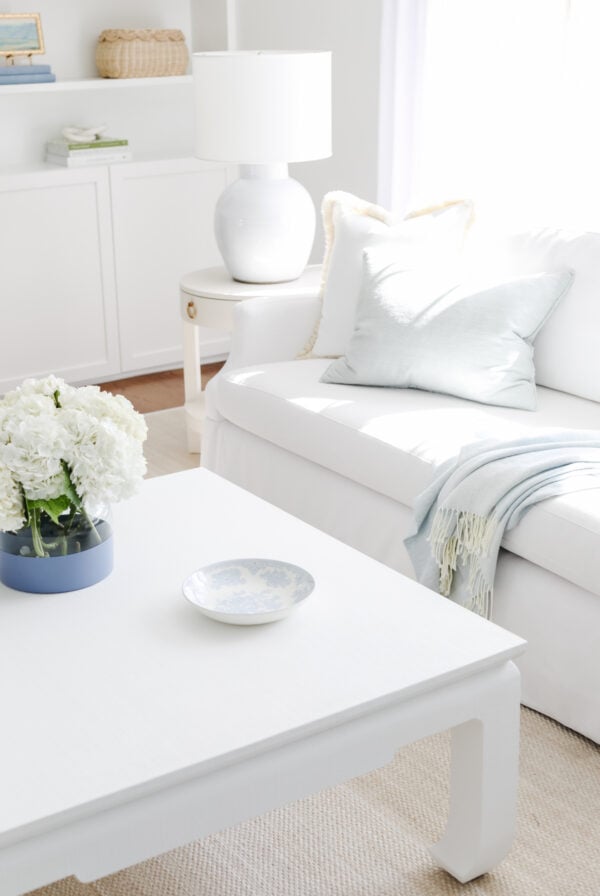







Where did you discuss what fabric to use? I just can’t find it anywhere.
Hi Mary,
What fabric are you referring to? Are you looking for something specific?
Let us know how we can help,
Julie
Great articles! Love the Serena & Lily dupes article. Thanks for the tips
Hi Vicky!
Thank you so much for your kind words, I’m so glad you’re enjoying our posts!
Have a wonderful weekend,
Julie